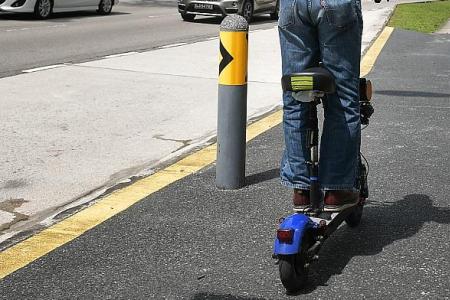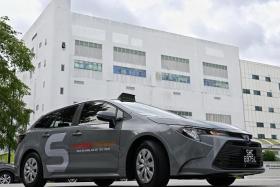PMD insurance needed to protect pedestrians
Current laws do not provide accident victims with enough avenues to seek compensation
Increasingly popular, personal mobility devices (PMDs) provide portable personal transport getting users from one place to another quickly.
They are in line with the government's plan to encourage active mobility - reducing congestion on the roads while also promoting healthy behaviour.
Individuals are currently prohibited from riding PMDs on public roads in Singapore.
While it may well have been to protect PMD users from traffic accidents, our footpaths have unfortunately become a more dangerous environment for pedestrians.
In March 2018, a 45-year-old female accountant was knocked down by an e-scooter rider and suffered serious brain injuries.
She now needs help with basic daily activities.
Unfortunately, existing laws and tighter new measures on the use of PMDs under the relevant regulatory frameworks do not go far enough in providing protection to victims of PMD-related accidents.
While the e-scooter rider was jailed, current laws do not sufficiently provide for the victim, who now has a permanent loss of income, to seek compensation.
And what if the e-scooter rider lacks the means to satisfy her claim for damages?
There is a need to introduce a compulsory insurance framework similar to the legislation for motor vehicles.
Over the years, PMDs have presented a host of issues that highlight the need to mandate a similar insurance framework as vehicles on public roads.
Rising numbers of PMD-related accidents
The sharp growth in reported accidents involving PMDs in recent years should be enough to silence detractors.
In 2015, 19 such accidents were reported. This rose to 42 in 2016, and 128 in 2017.
There were 251 reported off-road accidents involving active mobility users in 2018.
Few or no safeguards against the use of PMDs
From January 2019, certain PMDs with handlebars and an electric motor have to be registered.Yet, it still does not place any qualifying thresholds, such as requiring a licence for users.
Reaction time lag and severity of PMD-related collisions
PMD users are subject to inevitable reaction time lag, increasing the likelihood of collisions on narrow walkways with pedestrians of non-consistent walking or running speeds.
The recent revision of the speed limit for PMDs on footpaths from 15km/h to 10km/h will hopefully reduce the incidence and severity of accidents.
Inadequacy of available means to seek recourse
Parliament noted that there are at least three avenues for PMD-related accident victims to seek recourse - private settlement via mediation, a civil claim, and making a police report.
These options do not adequately address the need to assure the injured that their claim for damages will be paid by the errant PMD rider and/or his underwriting insurer.
Given the severity of injuries sustained in PMD-related accidents, the requisite compensation may be beyond the means of an ordinary PMD user.
Even if minor injuries were sustained, the costs involved in a civil claim or mediation may not be a meaningful exercise for the parties involved.
The pursuit of Singapore's goal of becoming a car-lite society should not come at the expense of pedestrians' well-being and safety.
The writer is partner, Withers KhattarWong LLP.
Get The New Paper on your phone with the free TNP app. Download from the Apple App Store or Google Play Store now



